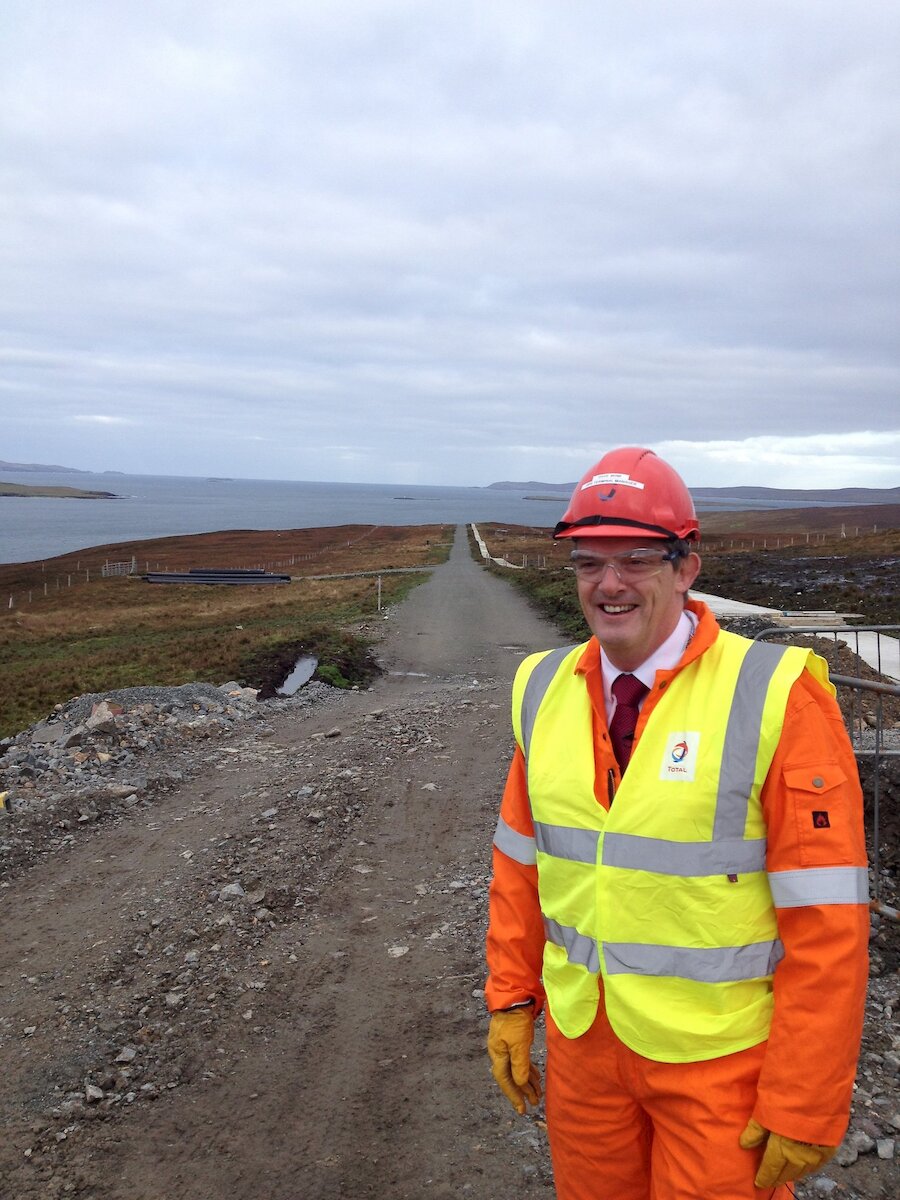Could things be looking up?
The big news over the past month or so has been the coming on stream finally, of the Total-operated Shetland Gas plant, bring the Laggan-Tormore system online and signifying the establishment of what has always been seen as a major aspect of Shetland’s energy future. After some 42 million working hours, on 10 February the first gas reached St Fergus near Peterhead.
Local Shetland Islands Councillor Drew Ratter said:
“The importance of the oil industry in general to the various communities from Brae and further north can’t be overemphasised, and the construction and development of the gas plant has already done a lot for local jobs and for our service businesses. The fact that we are now in a downturn in the oil industry obviously means that the ongoing effect may be a bit less than hoped for - for a while at least - but it secures ongoing, long-term activity at Sullom Voe, and for that we must be thankful”
His fellow councillor Andrea Manson agreed, and hoped that other developments would follow:
““I’m very pleased that Total did decide to go ahead and build the plant in Shetland, as they could simply have gone for offshore subsea options, so there has been a benefit. The gas plant is a significant in terms of oil and gas developments and we can only hope it will attract other companies and other projects. There’s plenty of land in Delting that could be used for oil and gas related developments.”
Work is yet to begin on BP’s delayed gas sweetening plant though repairs and upgrading on the main Sullom Voe Terminal continue.
Around 80 jobs are associated permanently with the plant at Sullom Voe and with oil and gas prices at last beginning to rise (crude prices have doubled over the past few weeks, having bottomed out at just above $20 a barrel) industry there are hopes that hydrocarbon-related activity off Shetland could begin once more to increase. Though by mid-February, it was reported that exploration for new fields in the Atlantic and North Sea was ‘at a standstill’.
Talk most recently has been about decommissioning redundant offshore production facilities, and Shetland’s capacity to take on that work is undoubted, even as marine technology capable of conducting a lot of the dismantling work offshore comes into play.
On the renewables front, Lerwick’s district heating system seems set for a greener future after receiving a £1.6 million loan from the Scottish government.
Shetland Heat Energy and Power (SHEAP) will install a two megawatt heat exchanger that will tap warmth from the sea in Lerwick harbour.
Local company Delta Marine was in the news after completing the tow of a wave energy convertor from Kirkwall, in the Orkney Islands to Falmouth on the UK south west coast - a total of 719 nautical miles. And there was excitement at the prospect of Shetland becoming the northern hub of a ‘European electricity superhighway’ feeding power between Scandinavia, Scotland and beyond, as part of the North Atlantic Energy Network which would link the UK and Scandinavian countries in an electricity distribution network with Shetland at its centre.
The idea is being promoted within the European Union by MEPs representing constituencies in various North Sea countries.
But the biggest news as far as Shetland an energy came on 7 March, as Brent Crude reached a 2016 high of $40 per barrel, and the gloom that has surrounded North Sea and Atlantic exploration and production began, just possibly, to lift.

